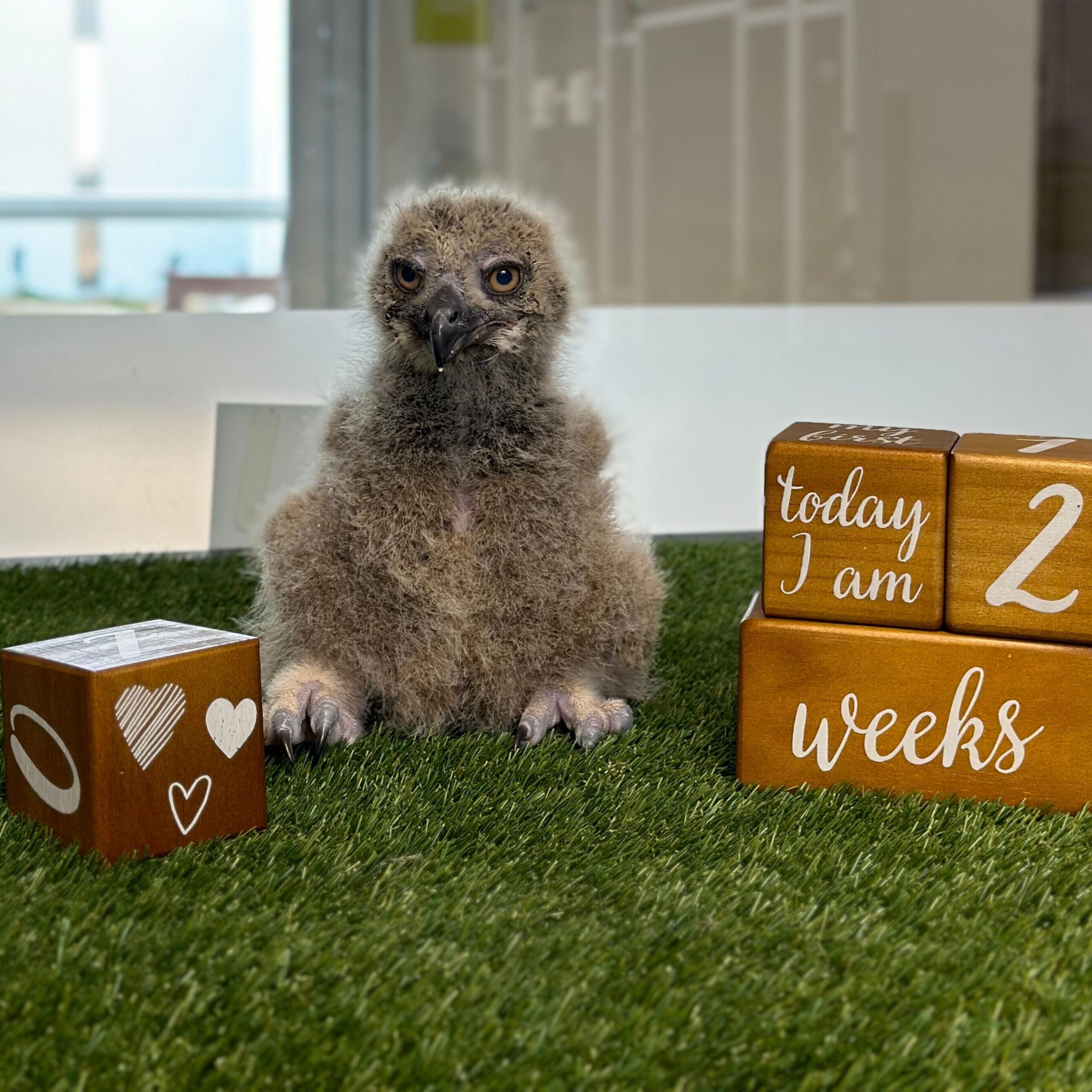Protecting Their Future: Conservation Stories of the National Aviary
Proactive Conservation: Eurasian Eagle-Owls
The National Aviary’s unwavering commitment to avian conservation is shown through our efforts to safeguard species. From slowing the rapid decline of the Least Concern Eurasian Eagle-Owl to the Extinct in the Wild Guam Kingfisher, our vital work makes a meaningful contribution to the preservation of species at every International Union for Conservation of Nature (IUCN) stage.
Preserving the Eurasian Eagle-Owl Population
Back in March 2024, we excitedly announced the hatching of two adorable Eurasian Eagle-Owl chicks (a male and a female) from our adult female owl X and her mate, Dumbledore. The awe-inspiring owlet pair grew in front of the eyes of dedicated Aviary guests who visited them in our Avian Care Center window along The Charity Randall Foundation Eagle Hall.
The owlets’ growth patterns and milestones were shared weekly on our social media channels. Eurasian Eagle-Owl chicks grow rapidly and in just eight short weeks, the pair were fully grown. The male owlet now calls the AZA-accredited Lehigh Valley Zoo his home, serving as a species Ambassador. The female owlet has joined her parents and a few other siblings in making the National Aviary her home!



Named Vera through our Name-A-Bird program by Aviary friends the Fonner family, this now-adult Eurasian Eagle-Owl is an enthusiastic Animal Ambassador in our educational, free-flight, immersive bird show, Habitat Heroes, presented by AAA Travel.
International Efforts
Vera and the Aviary’s other Eurasian Eagle-Owls hatchlings are a part of the Associations of Zoos and Aquariums’ (AZA) Species Survival Plan® (SSP), which works to maintain a genetically diverse population for the species under expert care. Eurasian Eagle-Owls experienced a considerable population decline in the 1900s, even becoming extinct in some areas throughout Europe. Although classified as “Least Concern” by the IUCN, these birds continue to face human-caused threats to their very livelihood, including pesticide exposure, habitat loss, and infrastructure collisions. The SSP® works to tackle these challenges by allowing us to gain insights into the natural behaviors of the species that can help us in our work to ensure their long-term survival.
This proactive approach alleviates the urgent pressures faced in the past by declining populations, allowing us to make a meaningful contribution to the preservation of Eurasian Eagle-Owls before they reach the brink of extinction.
Give TodayThe Guam Kingfishers’ Second Chance
In 2024, the National Aviary made international headlines with our participation in the Sihek Recovery Program. We worked diligently within the project to release nine Guam Kingfishers (an Extinct in the Wild Species known locally as sihek) onto the predator-free and fully protected island of Palmyra Atoll, making them the first wild population in four decades! Three of the nine sihek now thriving in the wild were hatched and hand-reared at the Aviary.

Saving Vietnam Pheasants Before It’s Too Late
Considered to be the most endangered of all pheasant species, the Vietnam Pheasant has not been seen in the wild since 2000. Although the species is currently listed by the IUCN as Critically Endangered, many believe it is Extinct in the Wild and urgently needs our attention. As of 2022, there are fewer than 100 individual Vietnam Pheasants in accredited facilities worldwide.
Native to the dense forest of Central Vietnam, this ground-dwelling bird is teetering on the edge of extinction due to habitat loss caused by herbicide usage, logging, agricultural land clearing, and poaching.
To help bolster their population under expert care, the National Aviary participates in the AZA Vietnam Pheasant Species Survival Plan ® (SSP). Our role in this conservation program is highlighted by the May 2024 hatching of a female Vietnam Pheasant chick in our Breeding Center.
Affectionally dubbed Wanda by her care staff, Wanda will go on to play an important role in the future survival of her species.
We Need You
None of the efforts the National Aviary makes with these species, and others, is possible without the support of people like you. Your gift this fall helps us to continue to safeguard at-risk species and protect their future.
